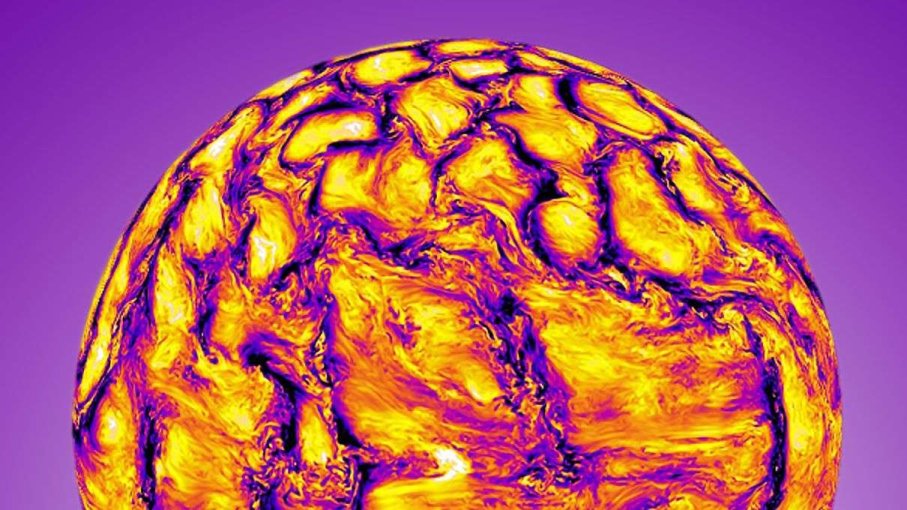Probing the Sun’s Physics With a New Magnetic Field Simulation

Solar scientists have devised a new, more comprehensive way to display the magnetic field of the star that commands the center of our astral neighborhood.
Though it’s 92.95 million miles (149.6 million kilometers) away from where you’re reading this, the sun affects almost every aspect of Earth-bound life. That’s why it’s important to improve our understanding of how the star works. It’s not just life here on Earth affected, as the 11-year cycle the sun’s magnetic field undergoes affects processes in our atmosphere and that of other planets, and elsewhere in space.
Here on Earth we’ve been able to simulate many of the sun’s electromagnetic physics processes, but until now the simulations have had to either focus on the sun close up, or one a large scale. What happens in the sun’s small-scale chaotic fields has been reproduced, as has that of the macro-level, but reconciling the two has so far proven unattainable.
Imagine you’re running a restaurant. Now imagine that in your main office, you only have room to speak to one manager at a time. On any given night at any given moment, you can only learn what’s going on in the main dining room from the front-of-the-house manager, or you can learn what’s going on in the kitchen from the executive chef. But never being able to talk to both people at the same time means you’ll never quite get an accurate big picture. That’s not a perfect metaphor, but solar researchers have dealt with a similar frustration when trying to simulate the physics of the sun.
Researchers have been able to fiddle with the math (that’s a technical term) and reduce the small-scale diffusivities, a parameter in the plasma physics that dictate how the sun works. Doing so had a minimizing impact on the dynamo effect, the geophysical theory by which the sun generates an electromagnetic field.
Further reducing the diffusivities, as described in a new article in the journal Science, let the team create hi-res simulations that can reproduce the large-scale and small-scale physics simultaneously.
Beyond the pure math of the issue, better understanding they physics of the sun’s magnetic field could provide information useful in telecommunications, atmospheric science and space travel.



 Creators of mankind
Creators of mankind Description of “Tall white aliens”
Description of “Tall white aliens” Where they came from?
Where they came from? About hostile civilizations
About hostile civilizations The war for the Earth
The war for the Earth “Tall white aliens” about eternal life
“Tall white aliens” about eternal life Video: “Nordic aliens”
Video: “Nordic aliens” Aliens
Aliens Alien encounters
Alien encounters The aliens base
The aliens base UFO
UFO Technology UFO
Technology UFO Underground civilization
Underground civilization Ancient alien artifacts
Ancient alien artifacts Military and UFO
Military and UFO Mysteries and hypotheses
Mysteries and hypotheses Scientific facts
Scientific facts


















